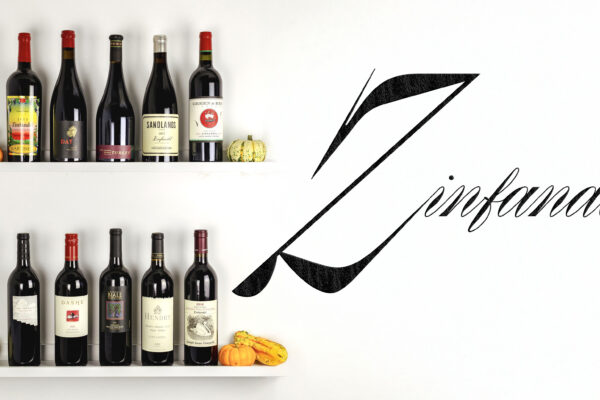Few wine regions embody the marriage of history and terroir as completely as Chianti Classico. In the hills between Florence and Siena, the legacy of Sangiovese stretches back to the Middle Ages, when fortified castles and monasteries overlooked the same vineyards that still shape the landscape today.
From the moment the Consorzio del Chianti Classico adopted the black rooster as its emblem in 1924, this land has stood as a symbol of authenticity, tradition, and resilience. For centuries, generations of growers have refined the balance of power and elegance that defines Chianti Classico, making it one of the world’s most enduring wines.
Today, a new generation of producers continues this work with passion and tenacity as the stewards of their historic estates while embracing organic farming and terroir-focused winemaking. Their wines stand as a testament to both Tuscany’s timeless past and its dynamic present — each bottle a story of heritage, place, and the soulful expression of Sangiovese.
The Roots of Chianti Classico
The story of Chianti Classico begins in the 13th century, when Florence and Siena waged wars for control of this strategic, fertile land. Vineyards here became symbols of identity and prosperity, and Sangiovese — hardy, noble, and expressive — emerged as the grape of choice.
In the 19th century, Baron Bettino Ricasoli helped codify the earliest blueprint for Chianti, laying the foundation for what would become one of Italy’s most recognized wines. His descendants and neighbors carried this vision forward, and by 1924, the Consorzio del Chianti Classico was formed to protect quality and authenticity, adopting the now-iconic black rooster (gallo nero) as its mark.
Modern Day Chianti Classico
Fast-forward to today and Chianti Classico is experiencing its third renaissance. Growers are increasingly embracing organic and biodynamic practices while focusing on single-vineyard bottlings and the distinct personalities of subzones, now recognized as UGAs (“Additional Geographical Units”). Winemaking balances tradition — long macerations, aging in cask — with thoughtful innovation, showcasing the full range of Sangiovese’s character, from savory and structured to pure and elegant.
This balance of old and new is embodied in the producers below, each of whom brings a unique perspective to Chianti Classico’s living legacy.
Taste the Tradition
Chianti Classico is more than a wine — it is Tuscany itself, captured in a glass. From the ancient stone walls of Castello di Cacchiano, to the family-run vineyards of Bucciarelli, to Monica Raspi’s poetic touch at Pomona, each estate embodies both the roots and the renaissance of this extraordinary region.
In every sip of Chianti Classico, you taste not just their native grapes, but centuries of history, tradition, and Tuscan spirit.
Meet the Producers
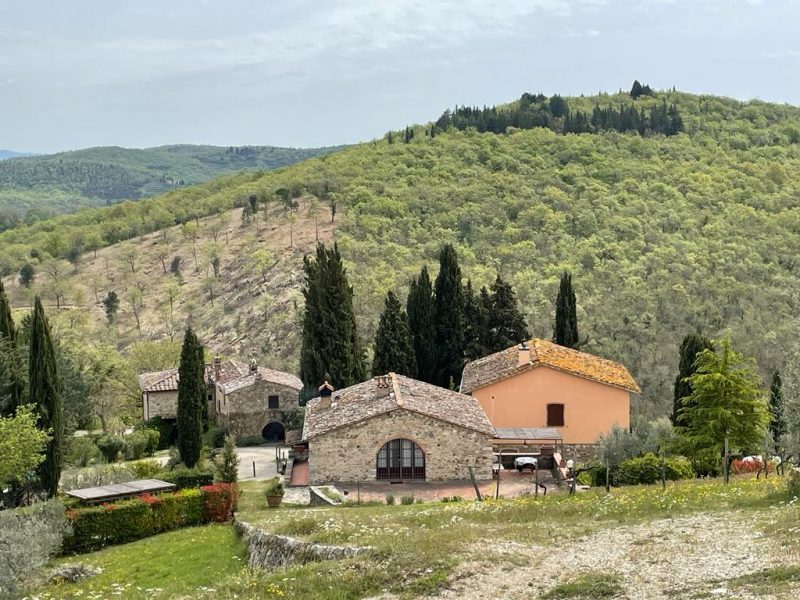
Nestled in the high reaching hills of Castellina in Chianti, the Bucciarelli family estate is steeped in history — once owned by Michelangelo and the Buonarotti family for over 300 years before being worked by 3 generations of Bucciarelli’s as sharecroppers. Today, the Bucciarelli family carries forward that legacy, crafting wines from indigenous varieties that reflect the authenticity of Castellina’s terroir with a deeply traditional hand and respect for the land.
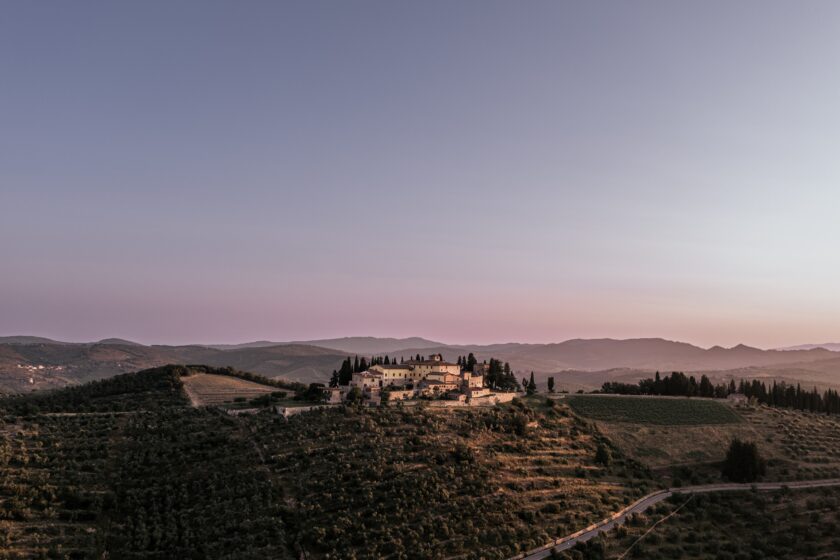
Perched above Gaiole, Castello di Cacchiano has guarded its vineyards for more than a thousand years. Founded in the 10th century, the castle has remained in the hands of the Ricasoli-Firidolfi family, who have farmed its surrounding hills for generations. Today, Baron Giovanni Ricasoli-Firidolfi continues this tradition, producing wines that honor Gaiole’s reputation for both power and structure.
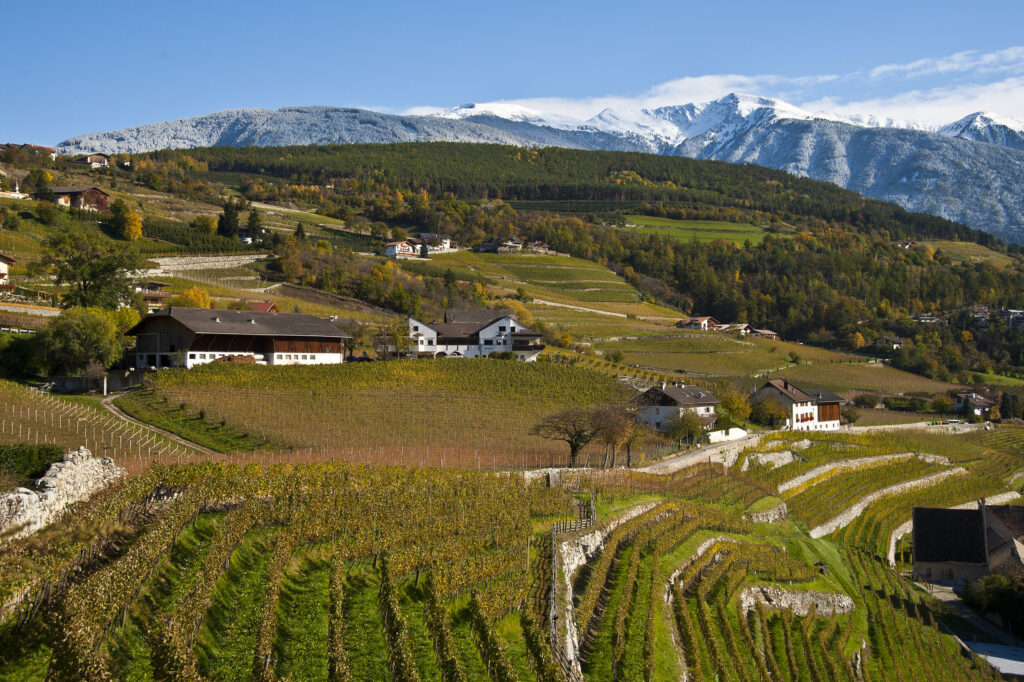
High above Castellina, Pomona is the vision of Monica Raspi, who transformed her family’s property into one of Chianti Classico’s most soulful estates. A trained veterinarian turned winemaker, Raspi brings a meticulous, artistic approach to Sangiovese, crafting wines that balance grace with authenticity. The name “Pomona” honors the Roman goddess of fruit and abundance, a fitting symbol for this flourishing vineyard.
Learn more: Bucciarelli | Castello di Cacchiano | Pomona
THE WINES
 |
|
|
- Certified Organic – Non-USDA/NOP
- 100% Sangiovese from estate-owned vineyards in Castellina in Chianti
- Southeast facing vineyards 420 to 500 meters above sea level
- Mostly Galestro soils with some clay and Alberese
- Spontaneous fermentation and maceration in cement tank lasts a month
- Malolactic fermentation happens naturally in the spring and summer after the harvest
- Aged in 9 to 20 hectoliter casks for two years (mixed between Slavonian and 60-year-old Tuscan oak casks)
- 1,000-1,500 cases produced depending on the vintage
- 1986 was the first year of production under the Bucciarelli label
|
 |
|
|
- Certified Organic – Non-USDA/NOP
- Produced only in exceptional vintages
- Bucciarelli Riserva is a selection made during the aging process of the Chianti Classico where the best casks are chosen for longer aging
- 100% Sangiovese from estate-owned vineyards in Castellina in Chianti
- Southeast facing vineyards 420 to 500 meters above sea level
- Mostly Galestro soils with some clay and Alberese
- Spontaneous fermentation and maceration in cement tank lasts one month
- Malolactic fermentation happens naturally in the spring and summer after the harvest
- Aged in 9 to 20 hectoliter Slavonian casks for 2 years followed by an additional two years in used barriques
- Between 400-600 cases produced on average
- 1986 was the first year of production
|
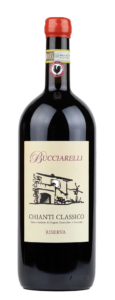 |
|
|
- Certified Organic – Non-USDA/NOP
- Produced only in exceptional vintages
- Bucciarelli Riserva is a selection made during the aging process of the Chianti Classico where the best casks are chosen for longer aging
- 100% Sangiovese from estate-owned vineyards in Castellina in Chianti
- Southeast facing vineyards 420 to 500 meters above sea level
- Mostly Galestro soils with some clay and Alberese
- Spontaneous fermentation and maceration in cement tank lasts one month
- Malolactic fermentation happens naturally in the spring and summer after the harvest
- Aged in 9 to 20 hectoliter Slavonian casks for 2 years followed by an additional two years in used barriques
- Between 400-600 cases produced on average
- 1986 was the first year of production
|
 |
|
|
- Certified Organic – Non-USDA/NOP
- Produced only in exceptional vintages
- Bucciarelli Riserva is a selection made during the aging process of the Chianti Classico where the best casks are chosen for longer aging
- 100% Sangiovese from estate-owned vineyards in Castellina in Chianti
- Southeast facing vineyards 420 to 500 meters above sea level
- Mostly Galestro soils with some clay and Alberese
- Spontaneous fermentation and maceration in cement tank lasts one month
- Malolactic fermentation happens naturally in the spring and summer after the harvest
- Aged in 9 to 20 hectoliter Slavonian casks for 2 years, followed by an additional two years in used barriques
- Between 400-600 cases produced on average
- 1986 was the first year of production
|
 |
|
|
- Sustainable Farming
- 95% Sangiovese, 5% Malvasia Nera and Colorino
- Silt and clay with marly limestone and calcareous sandstone
- Sangiovese and Colorino are harvested and fermented together while Malvasia Nera is vinified separately
- Maceration over a period of approximately two weeks with delicate délestage and pump overs followed by malolactic fermentation
- The two ferments are blended and aging takes place in medium and large format Slavonian oak barrels for approximately 12 months.
|
 |
|
|
- Sustainable Farming
- 95% Sangiovese (harvested from the estate’s top vineyards), 5% Malvasia Nera and Colorino
- Silt and clay with marly limestone and calcareous sandstone
- Sangiovese and Colorino are harvested and fermented together while Malvasia Nera is vinified separately
- Fermentation in stainless steel with maceration on the skins over a period of 18 days
- Once malolactic fermentation is complete, the wine is blended and aged for 14 months in medium Slavonian barrels and French oak tonneaux
|
 |
|
|
- Sustainable Farming
- 100% Sangiovese
- Millennio is produced from a careful selection of the finest grapes harvested from the estate’s top vineyards
- After picking, the grapes undergo an additional selection on sorting tables before destemming and crushing
- Fermentation in small stainless steel vats
- Maceration over 18 days with gentle punchdowns and controlled pumpovers followed by malolactic fermentation
- Aging takes place in small Slavonian oak barrels and French oak tonneaux for a period of 14 months
|
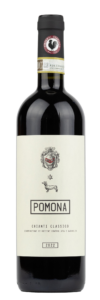 |
|
|
- Certified Organic
- 98% Sangiovese and 2% Colorino from Pomona’s Sant’Ilario and Vigna del Termine vineyards in Castellina in Chianti
- 320-360 meters above sea level
- Chalky marl soil with an abundance of small stones
- 15–25-year-old vines
- Fermentation in temperature-controlled stainless steel with indigenous yeasts and maceration on the skins for 12-15 days
- Malolactic fermentation in stainless steel
- Aged 8 months in 15-25 hectoliter Slavonian casks, then in cement tank for 6-8 months, followed by refinement in bottle for 3 months before release
- 1,600 cases produced on average annually
|
 |
|
|
- Certified Organic
- 100% Sangiovese from a vineyard planted in 1998 in Castellina in Chianti
- Chalky marl soil with an abundance of small stones and calcium carbonate
- 360 meters elevation
- Harvested by hand during the first half of October
- Fermentation and maceration on the skins for 12-15 days in stainless steel
- Aged in 15-25 hectoliter Slavonian oak barrels for 15 months
- Aged in glass-lined cement tank for additional 9 months
- Rests in bottle for six months before release
- 300 cases produced each year
|

















